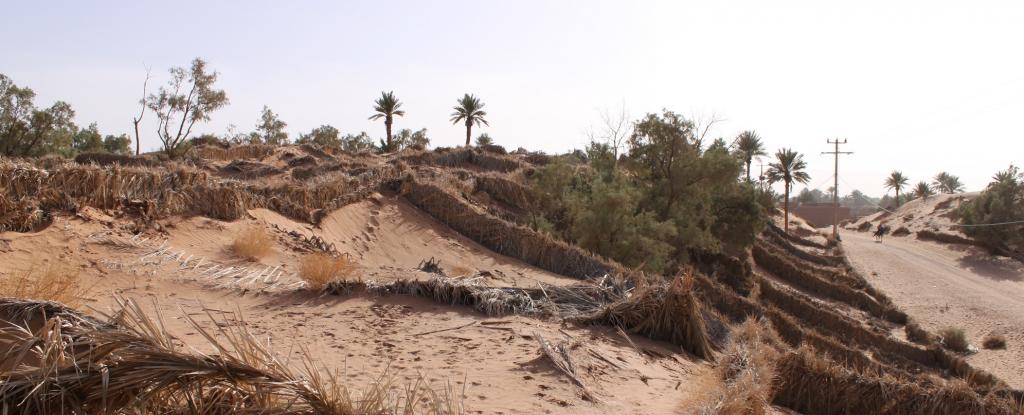The land use change has been recognized as a major factor associated with the emergence of zoonotic diseases (diseases transmitted from animals) such as COVID-19. Various documentations on zoonotic outbreaks worldwide have found that the richness of the biodiversity works as a buffer against transmission of zoonotic diseases[1]. Many scientific studies across the globe have found that the increased anthropogenic activities have resulted in the loss of biodiversity. It further led to the destruction of wildlife habitat. The struggle of wildlife to cope with destroyed habitat either created situations for increased in number of human-wildlife contact or resettlement of wildlife leading to inter-species transmission of pathogens[2]. The available knowledge on zoontoic transmission strongly suggests limiting the deforestation for various purposes.
The land use change of forest is part of human evolution, but it exponentially increased in last few century leading to emergence of various zoonotic diseases. In India the deforestation largely occurred from 1880 to 1960. From 1980s onward various policies were introduced for the protection of forest and regeneration of deforested land. A recent study shows that 16.9 million hectare forest land and 14.8 million hectare grasslands/shrublands was converted for agriculture in India from 1880 to 2010[3]. This unchecked conversion of the forest land is now being regulated by the Forest Conservation Act, 1980 and the Environment (Protection) Act, promulgated in 1986. Now all projects requiring forest land needs to go through the process of Environment Impact Assessment to minimise the environmental cost by imposing restrictions and ensuring implementation of the environmental plan for compensating environmental loss.
The land use change has been regulated through various policies and institutional framework in India. However, from 1980 to till date 3.11 lakh hectare forest land has been diverted for 27559 project required clearance under the Forest Conservation Act, 1980[4]. Moreover, the documentation of zoonotic outbreaks has also improved in last few decades. The National Centre for Disease Control (NCDC) recognizes zoonotic diseases such as Plague, Japanese Encephalitis, Rabies, Leptospirosis, Degue fever etc as serious public health challenges in India. From 2014 to 2018, the NCDC reported 220 incidents of zoonotic outbreaks in the country[5].
Land Use Change during COVID-19 Pandemic:
The COVID-19 pandemic has brought the issues of sustainable growth in the centre stage of many national and international policy discussions. It has been argued that not only for the revival of the economy but to attain global climate change goals and prevention from other zoonotic diseases in the future, we must think of green recovery. However, we have seen a number of hasty environmental clearances to many controversial and ecologically adverse developmental projects in the last two and half months in India. According to the data available on the website of MoEF&CC, from April 2020 to 15th June 2020, the government of India provided stage-I forest clearances to 249 projects. Similarly, the government has provided stage-II forest clearances to 232 projects in this period[6]. Many leading environmentalists and conservationists have criticised the government for its decision of forest and wildlife clearances to some highly controversial projects[7].
In the month of April and May, 2020 various authorities responsible for the protection of the environment and forest have cleared some of very controversial projects in dense forests. While the nation was under lockdown to contain the spread of COVID-19, the Forest Advisory Committee and National Board for Wild Life (NBWL) cleared projects like coal mining in Dehing Patkai Elephant Reserve in Assam, Etalin Hydroelectric project in Dibang Valley of Arunachal Pradesh and widening of national highway and lying of power transmission line in the Bhagwan Mahavir Wildlife Sanctuary in Goa. These clearances were given in meetings organized through video conferencing. Such arrangements of the meetings undermined requirement of site visit by experts, involvement of local communities in the decision and open public hearing. These decisions also overlooked the main causes of zoonotic pandemic such as COVID-19.
Other than the prevailing health crisis, the government is worried about revival of the economy. To boost economic activities, the government has announced various policy changes in the last three months. Hasty approval for long pending projects in the forest area is part of it. History tells us that after every major economic crisis, the world accelerated the destruction of nature and the environment by changing the use of forest land. Perhaps, this is the easiest way to respond to any economic crisis but highly unsustainable and invitation to more zoonotic outbreaks in the future.
-------
[1] Environmental Health Perspectives, Vol. 112, No. 10, July 2004, Accessed from: https://pubmed.ncbi.nlm.nih.gov/15238283/
[2]Science Compass, Vol 287, 21 JANUARY 2000, Accessed from: https://www.science.org/doi/10.1126/science.287.5452.443
[3] Global and Planetary Change 121 (2014) 78 –88, Accessed from: https://core.ac.uk/reader/82286272
[4] E Green Watch: http://egreenwatch.nic.in/FCAProjects/Public/Rpt_State_Wise_Count_FCA_projects.aspx
[6] PARIVESH, MoEF&CC, Accessed from: https://parivesh.nic.in/compareanalytics.aspx, Accessed on June 17, 2020.
[7]The Week, Environmentalists question clearances given during COVID-19 lockdown , Accessed from: https://www.theweek.in/news/india/2020/05/13/environmentalists-question-clearances-given-during-covid-19-lockdown.htmlAccessed on June 15, 2020.
This blog is a contribution to the LANDac Online Encounter 2020.
-------

